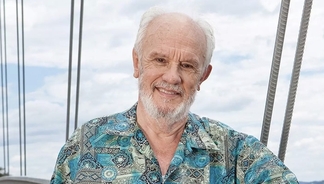Giving blood is usually thought of as a virtuous, straightforward process. In terms of its ethical plus points, it’s a no-brainer. People around the world desperately need blood transfusions in order to live - and there you are walking around with an easily replenishable supply. You get a biscuit, a cup of tea, a small bruise on your arm and an enormous sense of satisfaction.
However, behind the reassuring smiles and that warm, fuzzy feeling of having done a good deed, there is a multimillion dollar industry which is built on the charitable and often misinformed donations from people wanting to make a difference.
In 2014, a lawsuit between Oklahoma Blood Institute and a blood distributor called General Blood hit the headlines. The lawsuit was eventually settled but what remained unresolved were the questions it raised.
While all the suppliers are non-profits, the blood economy is lucrative nonetheless. According to IRS documentation, Oklahoma Blood Institute generated $85.6 million in the tax year ending March 31, 2013. Furthermore, that year, CEO Dr John Armitage reported earning $421,561. There were at least eight more on six-figure salaries, including six vice presidents earning $140,000 or more.
Perhaps the main reason why these individuals are so wealthy is the fact that blood’s value is partly determined by its location. At every stage, there is some form of labour to account for and due to the high cost of living associated with the east and west coasts, blood is far more expensive here. For the same $150 unit of red blood cells donated in the midwest, a buyer from Los Angeles can expect to pay an additional 50 per cent.
Due to the lower running costs, poorer states are able to collect more blood, sell it to the richer states and then use the surplus cash to expand their operation. This cyclic phenomenon helps quench the thirsty coasts, who can’t sustain themselves.
But one might hope that certain institutions, such as the Red Cross, would be immune to such commercialism? However, like all the centres which supply blood for transfusions, they sell it in order to cover running costs.
In fact, the American Red Cross has been repeatedly hit with million-dollar fines for mishandling blood and, speaking in 2006, a spokesperson explained that revenue from the sale of blood products would be used to pay a $4.2 million penalty. However, they didn’t appear to learn their lesson and, in 2012, were fined $9.6 million following hundreds of blood safety violations at 16 of their 36 blood collection centres.
But the blood economy gets more complicated still. The generation of a fatal disease called vCJD was pinned purely on reduced regulation of cattle feed processing in the UK. A brain disease which existed in sheep, it was transmitted to cows and then proved transmissible to humans. Critically, it was no longer safe to make blood plasma products from UK donors.
In 2002, the British government therefore purchased a protected supply from an American company. This laid the foundations for an international trade which continues to this day. The American supplier was later bought by a Chinese company - further privatising the supply of plasma products to the UK’s National Health System (NHS). Lord Owen, the Labour minister who, in the 1970s, created a system to make the NHS self-sufficient in blood products, described it as the worst possible outcome. Furthermore, China - which struggles with chronic blood shortages - had chosen money over blood.
Having been shown to negatively affect the quality of the plasma products, the money involved had become a sizable factor and there was now a vast number of organisations and individuals with vested interests. Add to this the quandary of paid donors and many questions were asked about the increased risk of infection.
Lucy Reynolds, a research fellow at the London School of Hygiene and Tropical Medicine, argued in 2013 that the UK government should follow the example of most developed countries and protect patients from the dangerous products regularly circulating on the open market. “When we know of such problems,” she states, “it cannot be responsible to choose to expose British patients to these risks when an alternative is available.”
This year, China outlawed reciprocal donation - which allowed a donor to nominate the exact person their blood went to. But this led to “blood trading” where donations were illegally charged for. However, as a blood-starved country, this was a lifeline for many patients. So while reciprocal donation is banned, an illegal supply with all the dangers that come with black market blood products, continues.
So how should all this change your actions? Simply put, it shouldn’t. The commodification of blood products certainly isn’t without its detractors and clearly, globalisation has had a less-than-desirable effect on certain countries’ management of their medical resources. However, what goes on behind the scenes needn’t necessarily change your attitude towards donating. After all, giving blood is one of the easiest ways you can use 20 minutes of your life to make a huge difference to someone else’s.
Featured illustration by Egarcigu

